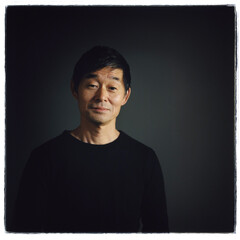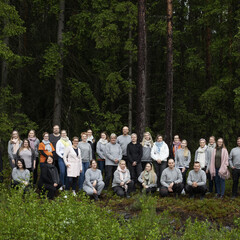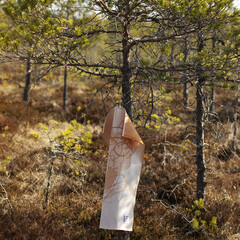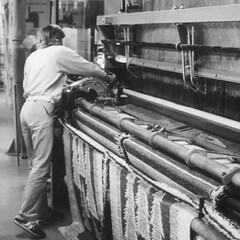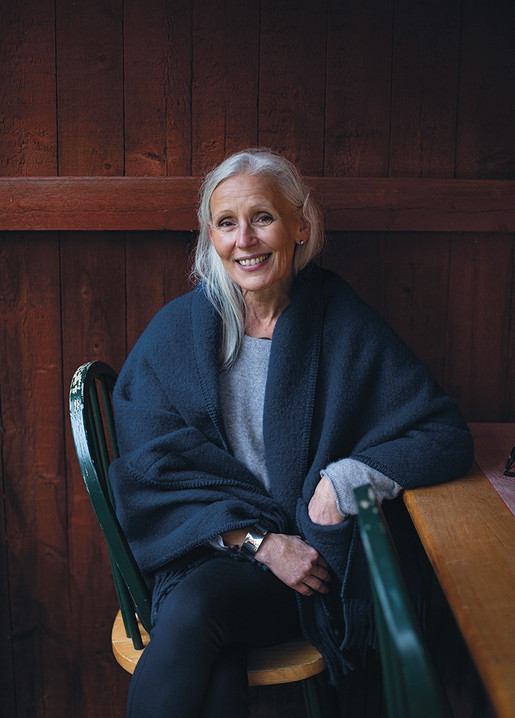
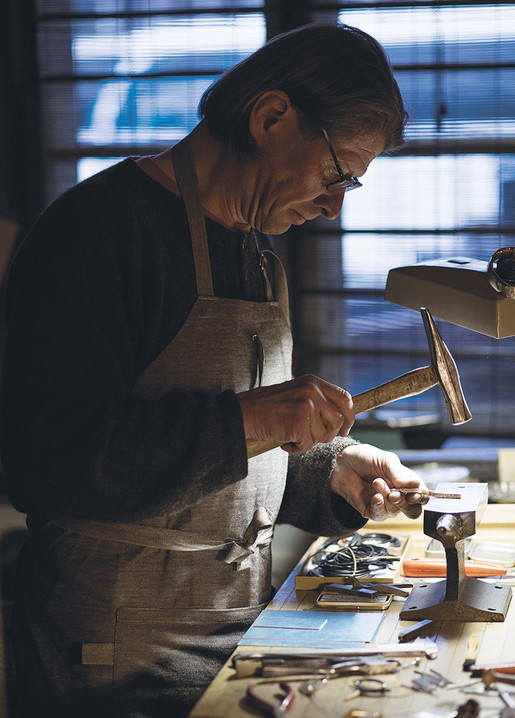
Authenticity That Spans Generations
The foggy fields welcome the visitor into Johanna Talso and Juha Koskela's home. The surroundings seem to celebrate the couple whose artisanal lifestyle is built on the appreciation of nature and tradition.
Johanna organises an annual craft fair where artisans and customers meet in 18th century historical surroundings, and sews historically accurate clothing from linen fabrics. "I grew up on a farm, so the landscape of my soul is a field," Johanna says.
When duty calls, Johanna doesn't count the hours. Ideas follow her everywhere she goes, and she sees that as a blessing. "An artisan's mind works differently," Johanna says and laughs. "We're a little weird like that." Her husband Juha Koskela is an awarded goldsmith, so craftsmanship is always present in their life.
Timeless, long-lasting materials and products have a special role in Johanna's life. She appreciates design and objects that endure. "They're not confined to present moment," she says. Textiles that can be passed down to future generations are valuable to her. In fact, she reveals that she still has some of the original linens designed by the world-renowned textile artist Dora Jung in the 1960s. The beauty of the linens hasn't faded over time. Lapuan Kankurit is currently reviving Jung's designs according to the original drawings and instructions, proving that their elegance really does span generations.
Johanna uses authentic materials, because they look and feel right. She sews clothing from Lapuan Kankurit linen fabrics, and Juha uses precious metals in his jewellery. "Tradition, history, nature, and authenticity all go hand in hand," Johanna says. The couple agrees that they didn't understand the significance of traditions when they were younger. "Now those strong values are more present in Finnish culture", Juha analyses. Johanna says that her family has always saved fun, beautiful, or handmade items. "I have my great-grandmother's linen tablecloths, and they're still in great condition," she smiles. She hopes that families continue to pass down items that are made to stand the test of time.
While craftsmanship is valued in Finland and all over the world, it still remains a marginal phenomenon. "Is it a trend to value craftsmanship, or is it really valued?" Johanna wonders. The pricing of handmade crafts is still occasionally debated. However, trendsetting magazines have also started to introduce artisanal products. "Crafts will always compete with mass-produced items," Juha adds. He's noticed that people also value individuality, and that's when trendy labels don't matter: "People want to create their unique appearance with clothing and jewellery." Johanna and Juha don't seem worried about craftsmanship disappearing altogether. "It'll always be there, sometimes stronger and sometimes weaker," Juha says. "They're appreciated more, because people don't make crafts themselves anymore."
As craftswoman and organiser of the 18th century craft fair, Johanna has experiences both sides of the artisanal community. It might be a small group of people, but special at that: "The artisanal community is close-knit," she smiles. Juha agrees. "There's a small group of people who don't want to fit in," he says, "and that's what we call craftsmanship."



